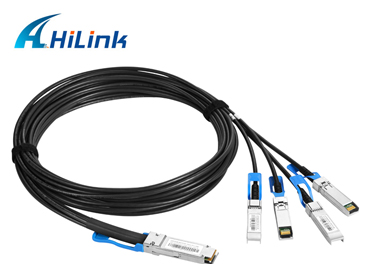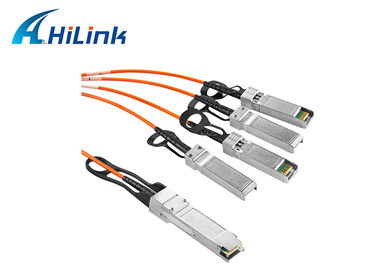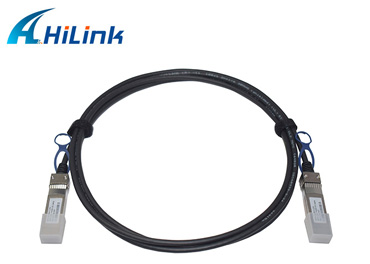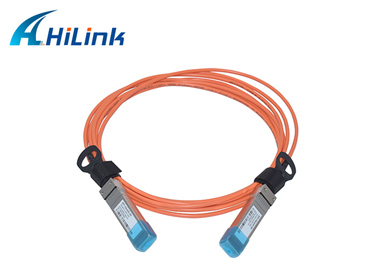DAC Cables vs AOC Cables: Which One to Choose?
Jul. 14, 2022
DAC Cables and AOC Cables are widely applied in data centers for high-performance computing network cabling systems owing to their lower latency, lower power, and lower cost. DAC Cables and AOC Cables come in a variety of configurations to meet network requirements. Each is available in 10G SFP+, 25G SFP28, 40G QSFP+, and 100G QSFP28 data rates with additional options for breakouts from 40G to 4x10G or 100G to 4x25G variants.
DAC/AOC Basics and Types
Direct Attach Cable (DAC) is comprised of a Twinax copper cable terminated with SFP+/SFP28/QSFP+/QSFP56/QSFP28 connectors on both ends, which can provide an electrical connection directly to active equipment. DAC cables can be classified into twofold: passive DAC & active DAC. Both passive and active DAC cables can transmit electrical signals directly over copper cable. The former can deliver without signal conditioning, while the latter has electric components inside the transceivers to boost signals. Normally speaking, DAC cables are used to connect switches, servers, and storage inside racks.
Active Optical Cable (AOC) consists of a multimode fiber optic cable terminated with SFP form factor connectors on both ends, which requires external power to complete the conversion of electric and optical signals, from electric signals to optical ones, and then convert to electric signals finally. Generally speaking, AOC cables are mostly used to link switches, servers, and storage between different racks inside data centers.
Breakout 100g QSFP28 To 4SFP28 DAC Cable
DAC/AOC Cables Comparison
DAC cables are used to connect switches, servers, and storage inside racks, while AOC cables are mostly used to link switches, servers, and storage between different racks inside data centers.
Power Consumption
Normally, the power consumption of AOC cables is higher than DAC ones, which is 1-2w. While the power consumption of DAC active cables is less than 1w, and the passive ones cost nearly no power consumption at the value of lower than 0.15w due to the thermal design of direct attach copper cables. As a result, the operating expenses on power consumption will be decreased when adopting the DAC options.
Transmission Distance
Adopting optical fiber technology, AOC cable can transmit over longer distances—100 m, while DAC cable link length limit is 10 m (passive DAC: 7 m; active DAC: 10 m). To sum up, DAC cabling solutions are suitable for short-range transmissions, while AOC solutions are applied in long-range networking cases.
Note: the max. distance of a signal that can be transmitted via a DAC cable change depending on the data rate. The link length will decrease as the data rate grows, for example, 100G DAC cables can only transmit up to 5 meters.
40G QSFP TO 4X 10G SFP+ AOC
Cost
Roughly speaking, DAC has a relatively simple internal structure with fewer components, and the copper cables are much cheaper than fiber cables. When implemented in large-scale data centers, the sum of money will be saved for large quantities of DAC cables compared to AOC options. DAC indeed provides a cost-effective solution over AOCs for short-range applications, but for long-range applications, it's wise to have the overall costs list by comparing these two options.
EMI Immunity
Electromagnetic interference (EMI), refers to a disturbance generated by an external source that will affect the electrical circuit. As mentioned before, the active optical cable contains optical fibers—a kind of dielectric that can't conduct electric current. Therefore, AOC cables are immune to electromagnetic interference, which can be used in most situations. However, due to the nature of copper in sending electrical signals, direct attach copper cables are vulnerable to the effects of EMI. Thus, the environment is important to avoid undesirable responses, degradation, or complete system failure.
DAC/AOC Working Scenarios
Influenced by the abovementioned factors, DAC and AOC cables are normally applied in different working scenarios.
10G SFP+ DAC Cables
DAC Cable Typical Application
The major utilization of 10G SFP+ DACs is connecting switches/servers to switches within or adjacent to the rack. In other words, these 10G direct attach cables can be used as an alternative for ToR (Top of Rack) interconnections between 10G ToR switch and server or the stacking of 10GbE switches. Since 10G SFP+DAC typically supports a link length of 7 m with low power consumption, low latency, and low cost, this option is an ideal choice for this short-range server-to-switch connections.
10G SFP AOC Cable
10G SFP+ AOC Cable Typical Application
Without the strict link length limits, 10G SFP+ AOCs are commonly used in several locations in the data center like ToR, EoR (End of Row), and MoR (Middle of Row). Like the DACs, the servers all connect up to a Top of Rack Ethernet switch, and each of them will have one or two Ethernet connections up to the switch and these can be patched by using AOC cables.
What's more, the utilization of 10G AOCs in the data center can also be realized in several main networking areas like Spine, Leaf, or Core switching areas. The interconnections are typically fulfilled by adopting these 10G SFP+ AOCs with their theoretical maximum reach being 100 m.
For more information and consultation, contact us here!















